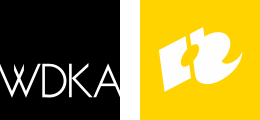Blended learning
There is something magical about how digital technology is influencing everyone in daily life. The term “blended learning” emerged in the field of education and has gained popularity in recent years. While there is some debate about its precise origin, the term blended-learning is generally attributed to the early 2000s. The roots can be traced back to distance education and the integration of technology into traditional classroom settings. As online learning and digital technologies became more prevalent, educators began exploring ways to combine face-to-face instruction with online components to enhance the learning experience.
The exact origin of the term is somewhat elusive, but for example Dr. Clayton Christensen discus the concept of blended learning and its potential in their 2001 book titled “Disrupting Class: How Disruptive Innovation Will Change the Way the World Learns.” The term blended learning first appears in the strategic agenda of higher professional education of 2000-2010. And it is mentioned again in the strategic agenda of higher professional education of 2015-2025. In these documents blended learning is seen as a tool to provide an open culture and to challenge students via gamification, video’s MOOCs, and flipping the classroom principles. However;the documents warn it should not be used to reduce the amount of tutor hours. In the Sector-agenda of higher art education of 2021-2025 blended learning is part of the theme: life long learning. This document describes how digitalization will change higher art education and the ambition of the sector to formulate a shared vision on blended learning for higher art education.
Main reasons for art & design to have an interest in blended learning:
– It relates to the general development of digitalization in society
– It relates to the developments in the professional practice
– It can support the ambiton of internationalization
– It can support more individual learning needs of students.
Before Blended Learning
In order to facilitate the learning in an innovative way the Willem de Kooning Academy (WdKA) began in 2015 to set up a team of developers and design their own unique online learning environment for students and staff. The decision for this initiative was because existing available online learning environments did not match WdKA’s vision and needs. There was a need for an open and transparent platform that allowed participants to communicate with each other across disciplines and to offer insight in each other’s courses. In addition, existing systems often missed basic abilities for participants, to upload images and video’s and be able to implement their own visual identity. WdKA decided to use WordPress, because it was easy for participants to use, and already well-known. Having their own developers also enabled them to easily set up electives and stations skills that staff and students can sign up for. This enabled WdKA to provide many multidisciplinary courses that are aligned with their vision of art education. WdKA learned that the users liked the autonomy, and the openness of the system, and with its benefits they received more-and-more requests to position active- and passive information. This led to a complex information system that supports the programs as well as provides internal information.
